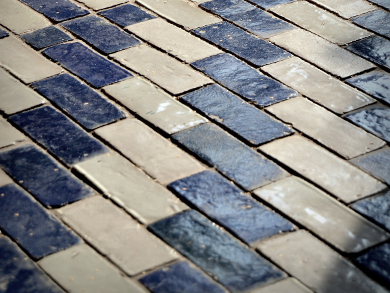Construction activities have increased worldwide over the past century. This is both a sign of good economic health and a tremendous generator of waste materials. Recycling and recovery rates for construction and demolition wastes range from 10 % to 90 % across the EU.
In light of the European “zero waste” program, M. I. Domínguez, S. Ivanova, and colleagues, Sevilla Institute of Materials Sciences, Spain, developed a way to turn some types of waste into glassy enamels and cellular glass “foams”. Their process involves vitrifying powders made from bricks, glazed tiles, or concrete waste mixed with MgO, SiO2, or NaOH. For wastes with a high alumina content, an Na2O flux helps ensure complete vitrification.
The powdered mixtures can be applied directly to tile surfaces, then fired at 1100–1200 °C. Alternatively, powders can be fired and quenched in water to form glassy solids, which are then reground into powder, applied to tiles, and fired to form a glaze. The second method produces a more uniform color.
Making cellular glasses requires the addition of a foaming agent, followed by thermal treatment. These lightweight expanded glasses are fireproof and waterproof, and they are good thermal and acoustic insulators.
- Recycling of construction and demolition waste generated by building infrastructure for the production of glassy materials,
A. Domínguez, M.I. Domínguez, S. Ivanova, M.A. Centeno, J.A. Odriozola,
Ceram. Int. 2016, 42, 15217–15223.
DOI: 10.1016/j.ceramint.2016.06.157


